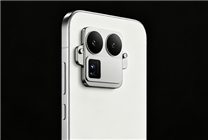Surge in China’s Smart Door Lock Market: Key Trends and Insights
Summary:
- In September, China’s online omni-channel market for smart door locks saw sales of 725,000 units, a 14.8% increase from last year.
- Traditional e-commerce platforms such as JD.com and Tmall accounted for 64.2% of sales, while the increasing demand for mid-to-high-end models reflects changing consumer preferences.
- Notably, Xiaomi leads the market with a 26.5% share, significantly boosted by its new smart lock model.
The latest report from Luotu Technology reveals a significant growth trend in China’s online omni-channel market for smart door locks, reporting a remarkable 14.8% increase in sales year-on-year as of September. This translates to a total of 725,000 units sold, generating approximately 600 million yuan in revenue, up 12.1% from the same month last year.
Key Players in E-Commerce
Traditional e-commerce platforms such as JD.com, Tmall, and Suning.com continue to dominate this segment, contributing 487,000 units to total sales—equating to 64.2% of the market share. Although these platforms only experienced a 4.6% increase in unit sales, their revenue rose by 9.5%, suggesting that while growth remains stable, it is relatively modest compared to emerging content-focused e-commerce channels like Douyin and Kuaishou.
Price Segmentation Insights
Significantly, the majority of sales (67.6%) were driven by smart door locks priced under 1,000 yuan, with the 500-999 yuan segment notably surging by 29.9% year-on-year. This trend underscores the increasing affordability and accessibility of smart home technology for Chinese consumers.
In tandem, the mid-to-high-end market segments, particularly those priced between 1,500-2,499 yuan and above 3,000 yuan, experienced substantial growth, each surpassing 40%. Brands such as Deschmann, Xiaomi, and Huawei have emerged as frontrunners in these premium categories, reflecting a shift towards enhanced features and technology.
Market Concentration Among Leading Brands
The competitive landscape has become increasingly concentrated, with the top four brands achieving a combined market share of 56.2% on traditional e-commerce platforms, an impressive increase of 34.5 percentage points year-on-year. This trend indicates a tightening of market space for smaller brands, as dominant players ramp up their marketing and product offerings.
Xiaomi’s Dominance and Market Performance
Leading the sales rankings is Xiaomi, which boasts a 26.5% market share. The recent release of the smart door lock 4 Pro has contributed to this growth, particularly in the price range of 2,000-2,499 yuan, where sales skyrocketed by over 190% compared to the previous year. This impressive performance showcases Xiaomi’s ability to innovate and cater to evolving consumer preferences.
Competitors on the Rise
Following closely behind, Deschmann holds a 23.7% sales share, propelled by its Kirin R9 series, which has become the leading choice in the premium segment above 2,500 yuan. This brand’s strength lies in its advanced AI features that enable intelligent identification and proactive customer service.
Cadiz, with an 8.9% market share, has also made significant strides, with its Q2 series accounting for 33.1% of the brand’s internal sales. Meanwhile, Huawei, capturing 6.0% of the market, leverages its Hongmeng ecosystem to seamlessly integrate smart door locks with other smart home products through its "Smart Life" app. Huawei has also reported a remarkable growth of 168.7% in the 2,500-3,999 yuan price range for the month.
Conclusion
The data from September points toward a resilient growth trajectory in China’s smart door lock market, driven largely by established e-commerce platforms and a shift in consumer preferences towards higher-end, technologically advanced products. Brands like Xiaomi and Deschmann are setting the pace, with innovations that not only attract consumers but also enhance their overall smart home experience. As this market evolves, stakeholders must remain adaptable, focusing on innovation and customer engagement to thrive amidst increasing competition.
The ongoing transformation in consumer behavior and technology adoption will play a crucial role in shaping future trends within this burgeoning market.






